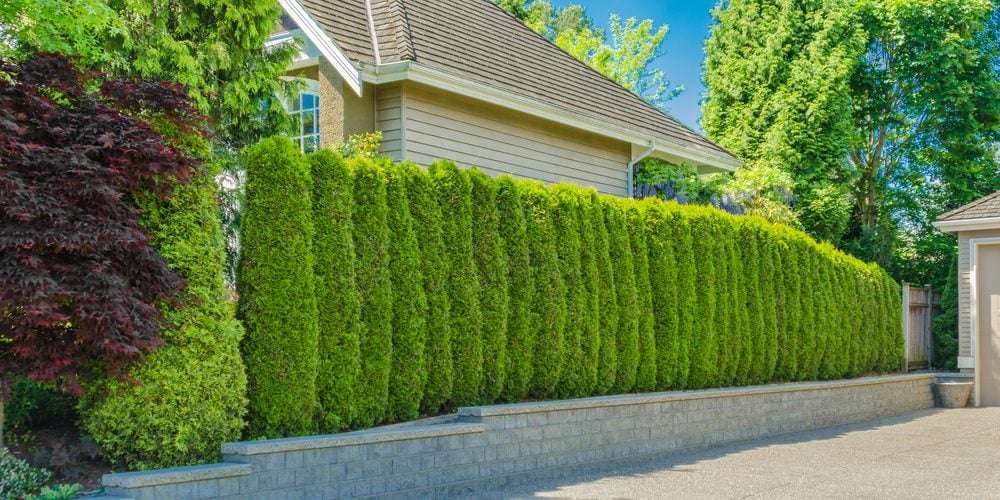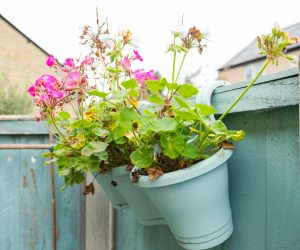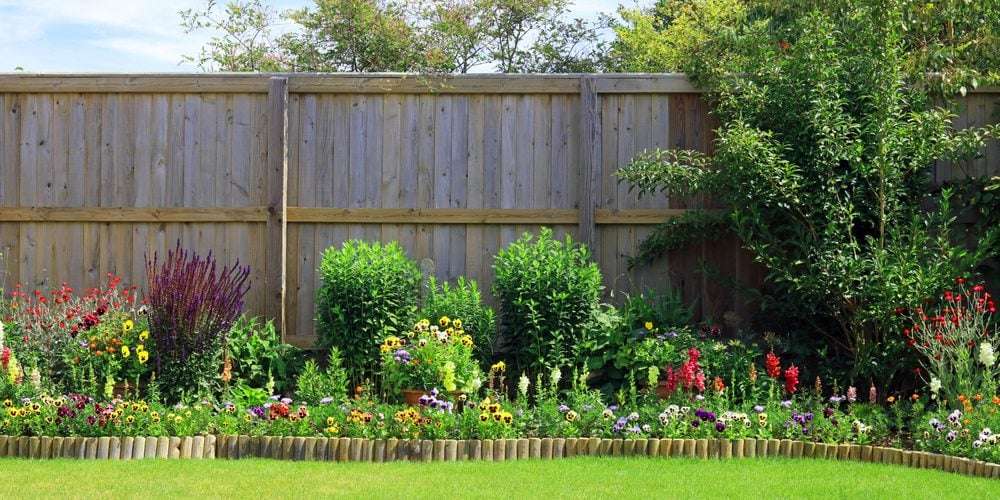
Privacy fences are important parts of any property. They keep out unwanted people and animals, and they keep your family safe. Still, they aren’t always the prettiest objects to look at.
Enter plants.
Plants provide excellent coverage and privacy. They are easily combined with existing privacy measures, like screens and fences. They are also customizable for beauty, utility, or both!
Not only is the result often much more visually appealing, but with the size and coverage of many shrubs and trees, plants often provide additional privacy over standard fences. No matter the size of your area, use plants to enhance your privacy with natural beauty.
Here are three ideas for adding plants to your privacy fence.
Use Potted Plants for Modularity
 On their own, potted plants provide plenty of beauty and functionality. Decorations around a pool; privacy screening surrounding a backyard dining area—the possibilities are endless. As well, potted plants can be shifted to meet the homeowner’s demands.
On their own, potted plants provide plenty of beauty and functionality. Decorations around a pool; privacy screening surrounding a backyard dining area—the possibilities are endless. As well, potted plants can be shifted to meet the homeowner’s demands.
When used with privacy fencing, potted plants and shrubs create modular walls and screens. These are especially useful in managing your kids’ play area. Potted privacy plants allow you to:
- Move privacy screening with the sun. This ensures your children stay cool and protected.
- Create private areas for your kids. You can eliminate the wait of growing plants and create a hidden oasis for their playtime.
- Maintain privacy and coverage throughout the year. Use potted evergreens for year-round privacy. Or, turn to non-living options while your potted plants winter in the garage.
As with any plant, choose options that grow within your hardiness zone. Some plants can only thrive in specific locations or growing conditions. And even though they’re in pots, privacy plants are typically large or bulky, meaning they’ll have to weather all seasons.
Trees and Shrubs Make Generational Privacy Fences
In contrast to potted privacy plants, trees and shrub walls create permanent barriers for decades.
Privacy hedges are common throughout the world. They help reduce noise, wind, and unwanted visitors. They also serve several functions, from waist-high dividing walls to 10-foot-tall impenetrable screens.
Green Velvet Boxwoods are slow to grow, but they prune easily. These hedges create that classic hedge wall look with minimal maintenance. Holly is another shrub, and is capable of growing up to 25 feet tall. It thrives in the year-round sun. Also, its dense structure forms thick walls perfect for privacy.
Growing even taller than bushes, trees make great property barriers. Many species of Laurel grow wide and tall, with bushy canopies from ground to crown. Like the Eastern White Pine, other trees have several feet of bare trunk before the foliage. This is a useful option for creating barriers without completely obscuring your property.
Bamboo is another great option for living fencing. This fast-growing grass has several advantages over other plants, including:
- Soil regenerative properties. Bamboo helps provide nutrients to the soil, while growing in poor conditions.
- Rapid growth and ease of use. Growing up to 35 inches a day, it can be grown and shaped into creative barriers. Though each stalk is relatively slender, a dense bamboo wall creates a pleasing privacy barrier.
- A variety of uses. With all of that growth, it will need proper maintenance. Luckily, bamboo has several uses once harvested. These include crafting materials, fire starters, and even compost.
Any option planted into the ground will last for decades. Though they can take years to grow, planted fences become part of the property, especially with consistent maintenance and management.
Create Curb Appeal With Combined Fences
Of course, anything you plant should provide curb appeal as well. When used with existing fencing, plants can turn drab wooden planks and old brick into pleasing privacy barriers.
One option is to fill any gaps within your fencing with living fencing. Just as the name suggests, living fencing includes hedges, trellis walls of ivy, and even tall, flowering shrubs.
Homeowners can also add plants directly onto and around fencing. Grow Koreanspice viburnum bushes along the base of your fencing. You’ll receive a beautiful bush of pink and white, and a fantastic scent of vanilla. Or, consider creeping plants like ivies and climbing roses. They add that touch of distinguished character to old brick walls.
Lastly, consider a two-sided approach for ultimate privacy. A standard fence keeps out would-be intruders and wandering animals. On the inside, though, rows of bamboo obscure the boring fence. Instead, you see a wall of living green. It is the best of privacy and aesthetics.
Be it bamboo, trees, or hedges, plants can add additional security, privacy, and noise reduction to existing fencing.
Final Thoughts
Plants provide character and beauty to any property. They also create living barriers to help keep your family safe and away from prying eyes. From a row of potted shrubs to a complete property barrier of trees, plants are excellent at enhancing your privacy fence.

About the Author
Meet Bridgett, your friendly neighborhood green building guru! With more years of experience than she’d like to admit, Bridgett is your go-to expert for all things eco-friendly construction. She’s on a mission to make your home the envy of every tree hugger in town (and maybe even the squirrels 🐿️). Let’s build a greener, funnier, and all-around better world together – one enlightened eco-conscious choice at a time!

